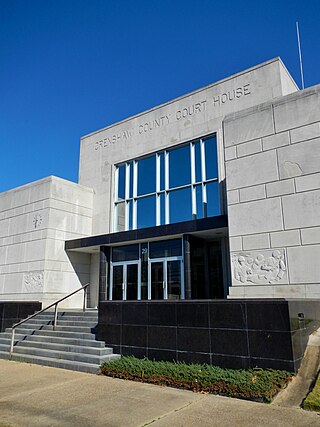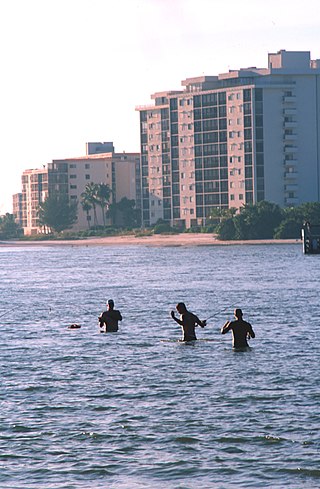Estero, Florida City of Estero | |
|---|---|
| Village of Estero | |
| Motto: Life Flourishes in the Estuary. | |
 Location in Lee County, Florida | |
| Coordinates: 26°25′40″N81°47′42″W / 26.42778°N 81.79500°W [1] | |
| Country | United States |
| State | Florida |
| County | Lee |
| Incorporated (village) | December 31, 2014 [2] |
| Government | |
| • Type | Mayor–council |
| • Mayor | Jon McLain |
| Area | |
| • Total | 25.39 sq mi (65.76 km2) |
| • Land | 24.37 sq mi (63.12 km2) |
| • Water | 1.02 sq mi (2.64 km2) |
| Elevation | 13 ft (4 m) |
| Population (2020) | |
| • Total | 36,939 |
| • Density | 1,515.82/sq mi (585.25/km2) |
| Time zone | UTC-5 (Eastern (EST)) |
| • Summer (DST) | UTC-4 (EDT) |
| ZIP codes | 33928, 33967 |
| Area code | 239 |
| FIPS code | 12-21150 [5] |
| GNIS feature ID | 2771501 [1] |
| Website | estero-fl |
Estero (Spanish for "estuary") is an incorporated village in Lee County, Florida, United States, located directly beside the first aquatic nature preserve established in Florida: The Estero Bay Aquatic Preserve, otherwise referred to as Estero Bay Preserve State Park which is within Estero Bay, Florida. At the time of the 2010 census, Estero was an unincorporated community and census-designated place, [6] but incorporated as a village on the last calendar date of 2014. [2] It is part of the Cape Coral-Fort Myers, Florida Metropolitan Statistical Area. As of the 2020 census, the population was 36,939. [7]
Contents
- History
- Geography
- Demographics
- 2000 census
- 2010 and 2020 census
- Economy
- Arts and Culture
- Parks and Recreation
- References
- External links
Sandwiched along Florida's Gulf Coast between Naples to the south and Fort Myers to the north, Estero is known as a popular destination for high-end shopping and dining as well as for exploring history and wildlife at its two state parks: Mound Key Archaeological State Park, which is only attainable by boat, canoe, or kayak and the Koreshan State Historic Site. [8] [9] Estero is also known for its many golfing opportunities as there are 11 golf courses within its borders consisting of 5 public and 6 private courses. There are also another 89 golf courses within 20 miles of Estero, including 23 public, 1 municipal, and 65 private courses. [10] Estero encompasses some 35 gated communities and is recognized as one of the safest places in Florida. [11]
Estero is the home of Hertz Arena, which hosts the home games for the Florida Everblades ECHL ice hockey team. Florida Gulf Coast University borders the Estero village limits and the Southwest Florida International Airport is located less than 5 miles to the north of Estero. [12] The corporate headquarters of Hertz Corporation is located in Estero.
In 2019, Estero was ranked #8 by USA Today for cities where the most people own their homes for having a homeownership rate of 85.5%. [13]




















